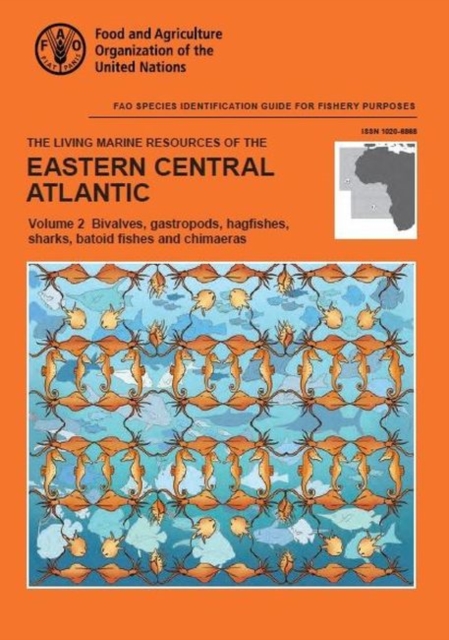
The living marine resources of the Western Central Atlantic : Vol. 2: Bivalves, gastropods, hagfishes, sharks, batoid fishes, and chimaeras Paperback / softback
by Food and Agriculture Organization, American Society of Ichthyologists and Herpetologists, European Commission
Edited by Kent E. Carpenter
Part of the FAO species identification guide for fishery purposes series
Paperback / softback
- Information
Description
This multivolume field guide covers the species of interest to fisheries of the major marine resource groups exploited in the Eastern Central Atlantic.
The area of coverage includes FAO fishing area 34 and part of 47.
The marine resource groups included are bivalves, gastropods, chitons, cephalopods, stomatopods, shrimps, lobsters, crabs, hagfishes, sharks, batoid fishes, chimaeras, bony fishes and sea turtles.
The introductory chapter outlines the environmental, ecological, and biogeographical factors influencing the marine biota, and the basic components of the fisheries in the Eastern Central Atlantic.
Within the field guide, the sections on the re source groups are arranged phylogenetically according to higher taxonomic levels such as class, order, and family.
Each resource group is introduced by general re marks on the group, an illustrated section on technical terms and measurements, and a key or guide to orders or families.
Each family generally has an account summarizing family diagnostic characters, bi o logical and fisheries in formation, notes on similar families occur ring in the area, a key to species, a check list of species, and a short list of relevant literature.
Families that are less important to fisheries include an abbreviated family ac count and no de tailed species in formation.
Species in the important families are treated in detail (arranged alphabetically by genus and species) and include the species name, frequent synonyms and names of similar species, an illustration, FAO common name(s), diagnostic characters, biology and fisheries in formation, notes on geo graphical distribution, and a distribution map.
For less important species, abbreviated accounts are used.
Generally, this includes the species name, FAO common name(s), an illustration, a distribution map, and notes on biology, fisheries, and distribution.
Each volume concludes with its own index of scientific and common names.
Information
-
Out of Stock - We are unable to provide an estimated availability date for this product
- Format:Paperback / softback
- Pages:xiv, p. 666-1509 figs (some col.)
- Publisher:Food & Agriculture Organization of the United Nati
- Publication Date:31/01/2017
- Category:
- ISBN:9789251092644
Information
-
Out of Stock - We are unable to provide an estimated availability date for this product
- Format:Paperback / softback
- Pages:xiv, p. 666-1509 figs (some col.)
- Publisher:Food & Agriculture Organization of the United Nati
- Publication Date:31/01/2017
- Category:
- ISBN:9789251092644